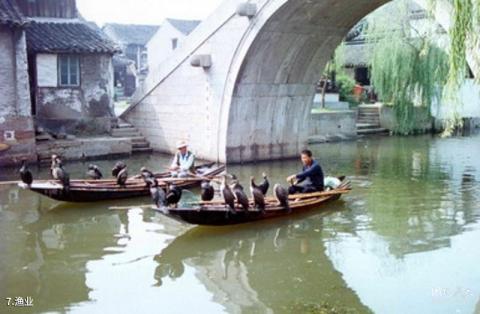
Fishery introduction: Pinghu is located in a water town in the south of the Yangtze River, bordering Hangzhou Bay in the south, with a vast sea area and a network of rivers within the territory. Since ancient times, it has been rich in sea and freshwater resources. The traditional tools for freshwater fishing include large dragnets, wire meshes, drawdown nets, carry nets, pull nets, pull nets, triangular nets, small bags, clamp nets, rolling hooks, wheat bows, cormorants, eel cages, crab traps, small Fishing, screw picking, snail fishing, etc. Before liberation, most fishermen used boats as their home and lived on fishing all year round. They had simple tools and lived in poverty. After liberation, fishery cooperatives and aquatic product cooperatives were gradually established. Later, the socialist transformation of Lianjia fishery was carried out, and aquatic product brigades were established in most communes. After the 1980s, human-powered fishing boats were gradually replaced by motorized fishing boats, and professional fishermen were transformed into farmers. Most fishermen had fixed residences on land. The fishing operation of leaving early and returning late and the working method of fishing and farming have greatly improved fishing. tools and improved living conditions. The traditional tools and methods of ocean fishing mainly include fixed nets, mobile nets, hand nets, drift nets, pair nets, large trawl nets, pull nets, and inserted nets. Before liberation, marine fishermen were all from coastal areas, some were professional and some were farmers and fishermen. Professional fishermen usually brought their own wooden sailboats or small sampans to go offshore to catch jellyfish, yellow croaker, hairtail, horse croaker, and flower fish. etc., the operation scope is small, the varieties are few, the output is low, and the risks are high. Most boatless fishermen can only go to the coastal beaches and use the rise and fall of the tide to set nets, or use simple tools to catch razor clams, oysters, earth clams, white clams, etc. After liberation, marine fishing developed rapidly, from single-family self-operation to mutual aid groups, cooperatives, and finally the formation of marine fishery brigades. Motorized boats replaced wooden sailing boats and small sampans. After the 1960s, the configuration of large motorized sailing boats created conditions for distant sea fishing. After the 1970s, due to large-scale land reclamation and pollution caused by coastal industrial construction, fishing by ordinary people on the coast has become impossible. Only professional fishermen with large motors and sailboats can reach the open sea for fishing operations. .
